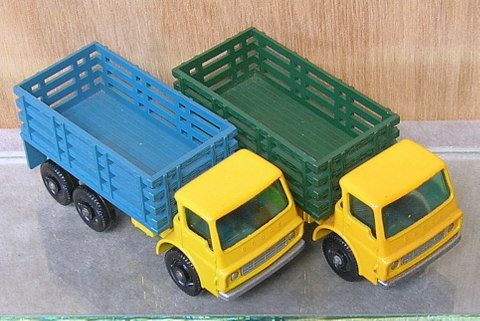Idris wrote:We actually went down precisely this path on the old Lefora Forum when discussing the various colours of the 42b Studebaker Lark. Although it seemed like the obvious solution, after an awful lot of toing and froing, we came to the conclusion that there were simply too many variables (mainly the way colours are rendered on a monitor, but also people’s own colour perception).
Having everyone work with an agreed set of colour swatches would be the ideal solution I suppose, but not everyone can afford such luxuries, plus there is the issue of finding a set which is both available and identical Worldwide.
"simply too many variables"
But see this is why it works, and why color standards were invented. Your monitor sees a color differently than Ghosthunter's, and each of you see that color differently through your eyes, both from the screen and in person. But the crelationships between colors don't change. Your "light tan" may be different than Ghosthunter's but to each of you, it will always be the same color. When comparing it to "darker tan" it will always be in the same place on the color wheel regardless of how each person sees it. When you go to the shop to have your fender repaired, the bodyman your car is a different color to the bodyman than it is to you. But he is able to provide a match because the color of your car is standardized. Everyone sees red differently, but Ferrari Red is Ferrari Red no matter who is looking at it. When trying to match colors, I get as close as I can then I bring my possible choices to a woman. It's proven that they can see color differences that men can't. I always use the same woman because everyone sees color differently.
Physical paint chips are better than colors on a computer. Your eyes are reading the color directly and able to do a direct comparison with the toy. But not everyone can afford a library of paint chips. But something like this can go a long way toward your goal
http://www.ebay.com/itm/Paint-Colour-Ch ... 1736484963 I've seen posts where people have spent £50 on a toy because it had a different color baseplate than another, surely they can chuck £25 so that everyone can agree what color that baseplate is. Physical comparison is how you write the definition.
Screen colors are interpreted by your monitor then your eyes read that color off the monitor. That's two levels of variation which is a problem. But there's an advantage in that color charts and comparisons are free and readily available.But if you tell someone that one yellow is RAL1033 (#ff9436) and another is RAL1037 (#f39f18), they can readily find a site that compares the two. Then they can say to themselves "Yes, that one is more yellowish (or brownish or reddish or whatever), now I know what to look for". Digital comparison is how you distribute the definition.
I have a library of thousands of colors. I have a crude spectrophotometer. Together, they only get me in the general vicinity of what I need. There are several standards that have to be sorted through looking for a match. Once a match is found, the paint rarely matches the chip. Generally the paint manufacturer's fault, and sometimes I have to try another vendor. Matching colors is expensive, getting in the general ballpark for comparison is nearly free.
I won't harp on the issue further, but I think that an imperfect solution is still a better solution than "light tan" vs 'dark yellow".

